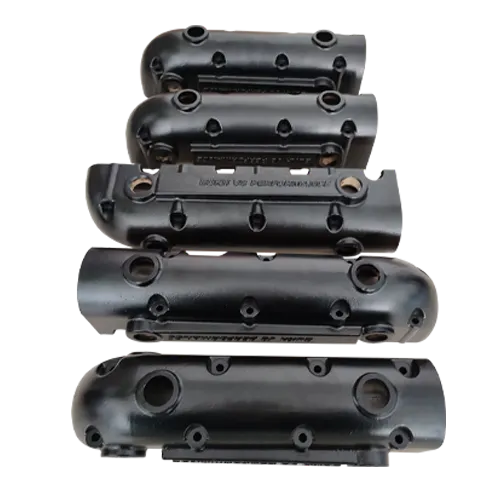Mobile:+86-311-808-126-83
Email:info@ydcastings.com
Exploring the Benefits and Techniques of Aluminum Sand Casting in Manufacturing Industry
Sand Casting Aluminum An Overview
Sand casting is one of the oldest and most widely used metal casting processes, particularly for aluminum. This method involves creating a mold from sand and using it to shape molten metal. The versatility and cost-effectiveness of sand casting make it an ideal choice for both small-scale and large-scale production of aluminum parts. This article delves into the principles, advantages, and applications of sand casting aluminum, along with some tips for achieving high-quality castings.
The Sand Casting Process
The sand casting process consists of several key steps
1. Pattern Creation The first step involves creating a pattern that resembles the final product. This pattern is typically made from metal, plastic, or wood and is slightly larger than the intended casting due to the shrinkage of aluminum as it cools.
2. Mold Preparation A mixture of sand and a binding agent is packed around the pattern to form a mold. The sand used in this process is usually silica sand, which offers excellent heat resistance and stability.
3. Mold Removal Once the sand has set, the pattern is removed, leaving a cavity in the shape of the desired part. Care must be taken to ensure that the mold retains its integrity and that no sand particles have been displaced from the cavity.
4. Pouring Molten Aluminum Molten aluminum is then poured into the mold cavity. The temperature of the aluminum should be closely monitored to ensure that it flows freely into all parts of the mold.
5. Cooling and Solidification After pouring, the aluminum is allowed to cool and solidify. Cooling rates can be controlled to minimize defects such as porosity or cracking.
6. Mold Removal and Finishing Once the aluminum has solidified, the sand mold is broken away, revealing the casting. The final step involves trimming any excess material and finishing the surface as needed.
Advantages of Sand Casting Aluminum
Sand casting offers numerous advantages, making it a preferred method for many manufacturers
- Cost-Effective The materials used in sand casting are relatively inexpensive, and the process itself does not require expensive machinery, making it economical for both low and high-volume production.
- Versatile Sand casting can produce complex shapes and large parts, thus allowing for a wide range of applications in various industries.
- Adaptability This method can cater to different types of alloys and materials, allowing manufacturers to make adjustments based on specific requirements.
sand casting aluminium

- Good Surface Finish While the surface finish may not be as smooth as die casting, it is often sufficient for a wide variety of applications. Additional finishing processes can enhance the surface as necessary.
Applications of Sand Casting Aluminum
Aluminum castings have a diverse range of applications across various industries
- Automotive Sand casting is frequently used in the automotive industry to produce engine blocks, transmission cases, and other critical components, balancing weight and strength effectively.
- Aerospace In aviation, aluminum sand castings are utilized to manufacture components that require good strength-to-weight ratios, such as brackets and housings.
- Consumer Goods Many household items, including cookware and decorative items, are also produced using aluminum sand casting.
- Marine Applications The corrosion resistance of aluminum makes it a popular choice for components in boats and other marine vehicles.
Challenges and Considerations
While sand casting has many benefits, it is not without its challenges. Potential issues include
- Dimensional Accuracy Sand casting may not achieve the same level of precision as other methods like die casting.
- Surface Finish The as-cast surface may require additional machining or finishing to meet specific requirements.
- Defects Common casting defects such as porosity, shrinkage, and inclusions can occur, necessitating the use of quality control measures throughout the process.
Conclusion
In conclusion, sand casting aluminum remains a vital method for producing a wide array of parts and components. Its cost-effectiveness, versatility, and adaptability make it an excellent choice for many industries. By understanding the process and embracing best practices, manufacturers can achieve high-quality results that meet or exceed their production needs. Whether for automotive, aerospace, or consumer products, sand casting aluminum continues to be a reliable and essential manufacturing process.
-
Why Is Choosing the Right Motor Housing Critical for Engine Performance?NewsJul.18,2025
-
Which Impeller Types Best Optimize Your Pump’s Efficiency?NewsJul.18,2025
-
Optimize Maintenance Efficiency with Durable Oil Catch SolutionsNewsJul.18,2025
-
Maximize Pump Performance with Precision-Engineered ComponentsNewsJul.18,2025
-
Elevate Industrial Flow Systems with Precision-Engineered ComponentsNewsJul.18,2025
-
Boost Durability and Functionality with Precision Power CastingsNewsJul.18,2025











